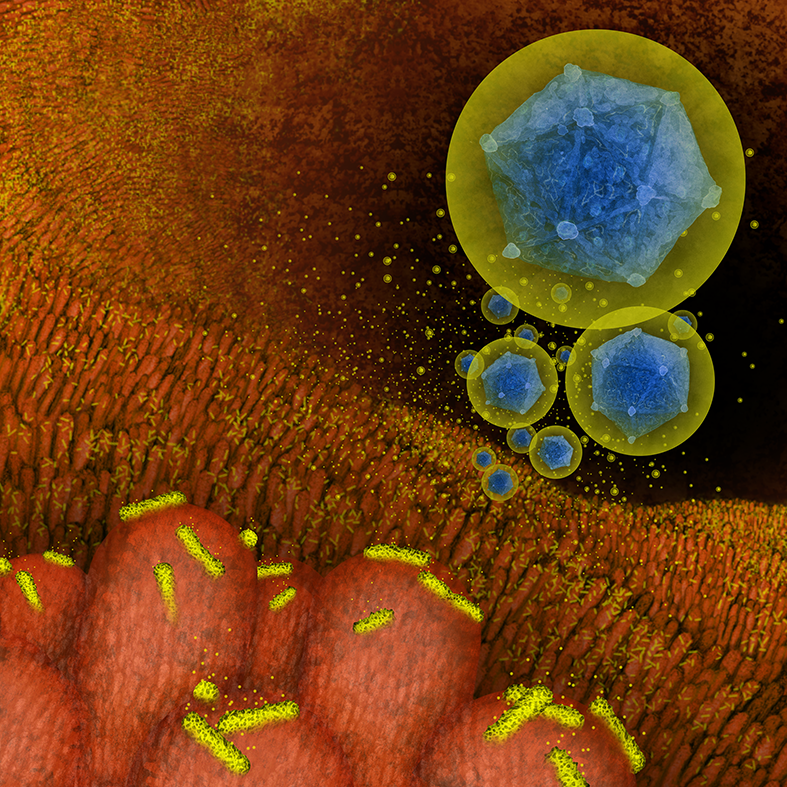Host-pathogen Interactions
Gaining novel insights into host-pathogen interactions provides unique opportunities to intervene allowing prevention or combatting infection.
We also study infection with a view to understanding how infection undermines host cells. This knowledge is then used to undermine host cells in conditions such as cancer where elimination of specific host cells is desirable.
We utilise acute and persistent models of bacterial infection. Salmonella Typhimurium in healthy individuals causes acute infection manifesting in a self-limiting gastroenteritis usually lasting 48-72 hours. Bacteria infect and breach the intestinal epithelium instigating an intestinal immune response. These bacteria manipulate host cells through an array of proteins delivered temporally via a type 3 secretion system. Studying these 'effector proteins’ has provided insights into how infection progresses and enabled elaboration of their role in manipulating life span of both intestinal epithelial cells and immune cells.
Adherent-invasive Escherichia coli (AIEC) in contrast to S. Typhimurium is a pathogen that persists within immune cells, replicating to high numbers over a prolonged infection period. AIEC remains a conundrum, lacking the virulence factors normally associated with bacterial pathogens, but remaining inextricably linked to intestinal inflammation associated with Crohn’s disease. Our research has pointed to metabolism by AIEC being the main mediator of its virulence. Readily available intestinal compounds, such as ethanolamine and propionic acid, alter virulence of AIEC resulting in production of released bacterial microcompartments of toxic by-products of metabolism.
Through collaboration with clinical colleagues and through the BINGO group of scientists at the University of Glasgow, we continue to understand the relevance of these findings for Crohn’s disease patients.


